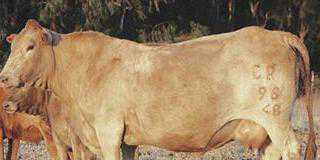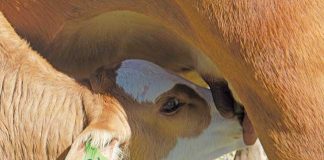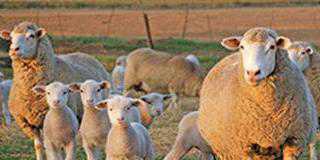
Photo: Supplied
According to Paul Summerford, a board member of the South African Dexter Cattle Breeders’ Society (SA Dexters), 16 feral Dexter cattle that had lived for decades without any human contact in the Addo Elephant National Park have adapted well after relocation earlier this year.
The Addo park boasts a dense elephant population, and the cattle herd had been thriving among predators such as lions and leopards until the time of being moved to Bronkhorstspruit in Gauteng. The animals survived about 27 years in the park.
The first members of the herd escaped from a nearby farm belonging to Dr Chris Landman. Since then, the cattle have lived in the park without any human interaction until their removal earlier this year.
Landman donated the animals to the society, and earlier this year they were darted and brought to the farm of Kobus van der Linde, the society’s chairperson.
“What was very interesting was that the animals, despite the lack of any human contact, remained in excellent physical condition. After the herd was removed the animals had to go through a period of adaptation to acclimatise them to animal feed other than the vegetation available in the park.
“It must be kept in mind that the park includes five of South Africa’s nine biomes, including the Albany thicket, fynbos, forests and Nama karoo and coastal dunes and grassy plains.
“The spekboom (Portulacaria afra) predominates in the area,” Summerford explains.
He says that one of the reasons behind the removal of the cattle was that black-maned lions from the Kalahari were introduced to the Addo national park about 15 years ago.
These lions, as opposed to lions from, for example, the Kruger National Park, were introduced because they were disease-free and would not affect the buffalo population, which may otherwise have contracted tuberculosis (TB).
The challenge faced by SANParks was to maintain the TB-free status of the Addo buffalo, which could have been compromised by the roaming group of cattle.
The Dexters had been regularly spotted and photographed in smallish groups over the years and the matter ultimately came to the attention of SA Dexters.
After extended negotiations it was agreed upon by the society and other role players to investigate the best possible options for the capture and relocation of the animals. This, however, had to be put on hold because of the COVID-19 pandemic and associated lockdowns.
Relocation
According to Van der Linde, the co-operation from both Landman and the SANParks authorities has been invaluable. After he consented to the removal of the herd, SANParks agreed to arrange for their capture and securing.
Under the oversight of the Addo management team, the darting and capture of the animals took place as part of SANParks’ normal capture and relocation programme.
The first seven animals were darted and captured within three weeks, and five more were captured a week later.
SANParks assembled them in a boma until all tests, namely for TB and brucellosis, and hair and blood samples, had been completed. All the animals tested negative for TB and brucellosis and were duly moved to Bronkhorstspruit.
Bigger and stronger
Van der Linde says the Addo Dexters adapted remarkably to nature in their quest to survive.
Because of inevitable inbreeding they have grown bigger than commercial Dexters and have very strong bones and hips.
According to him, it is particularly interesting that younger females are heavier in the forequarters than commercially bred animals, with a thick fat deposit on the chest.At the time of the relocation, there were 16 surviving animals and they were all removed from the park.
The Addo Dexters have since then been subjected to a variety of tests by genetics testing centre Unistel in conjunction with Prof Errol Cason in the Department of Animal Sciences at the University of the Free State. Interestingly, the initial test showed that only two of the animals had internal parasites.
Van der Linde points out that while commercially bred Dexters can live for up to 16 years, it is unlikely that the Addo cattle will live more than eight years. He ascribes this to the effect of coarse grazing on their teeth.
“They were wild in the sense that they were never exposed to human contact and shied away from people, but since their arrival on the farm, the animals have adapted excellently. I am able to move among them without any danger at all.
The fact that the Addo Dexters managed to survive without any human intervention for so long underpins the breed’s inherent adaptability and hardiness, although some of them succumbed to the devastating drought in the Eastern Cape a few years ago.”
Animal science
According to Cason, the animals’ geographical isolation could theoretically have had significant fresh genetic and behavioural consequences for the animals.
He says that one of the most pressing challenges facing modern animal breeders is the ever-changing environment under which production occurs, as climate change is likely to result in more adverse temperatures when compared to the recent past.
Increased and decreased temperatures can have adverse effects on production traits and could result in a dramatic decrease in fertility.
“However, exactly how much and what will change in the future remains difficult to predict, as such genetic improvement systems that can respond rapidly to changes in breeding objectives are desirable.
“To date, very little attention has been given to the performance under lower levels of nutrition in breeding plans,” he explains.
Adaptive genomics
Since Dexter cattle originated in Ireland, selection in South Africa could become an interesting case study due to the geographic and environmental contrast that these Dexter subpopulations were subjected to during selection.
After long-term selection, breeds living in different environmental conditions may have formed a unique adaptive evolutionary system. This may hold novel insights into differences in genomic structural features (selection signatures) caused by artificial or natural selection under more adverse conditions.
“For this reason, the Dexter population running wild for generations in the Addo park is of such interest to us. These animals thus offer a unique perspective into how nature would select for survival in adverse conditions such as drought, parasites, disease, fertility, among others.
The natural selection that the population underwent in this unfavourable environment could possibly aid in future decision-making in breeding plans. Therefore, the detection of selection signals is vital to uncover the genes related to economic traits and explore adaptation mechanisms,” says Cason.
The current study is looking at a genetic analysis of commercial Irish and South African Dexters in comparison to the Addo populations. Early results indicate genomic differentiation between the Irish and South African Dexters and the Addo population to the extent that they are almost a subpopulation from the commercial animals.
Disease resistance
“Looking at what nature selected for, there are several significant genetic markers that might hint that these animals have the potential to utilise feed more effectively, how they utilise the rangeland and their grazing distribution and also how they fight off disease and parasite infections,” he says.
“This makes sense when considering that these animals would have recently survived an extended period of drought in the Addo and would also have to be able to be resistant to various tickborne diseases without human intervention,” Cason concludes.
This work is still in its infancy but is starting to indicate that these isolated cattle are a good indication that if we want to successfully breed cattle in the future, there are some underlying traits that need to be attended to during selection.
Email Prof Errol Cason at [email protected], or Kobus van der Linde at [email protected].













